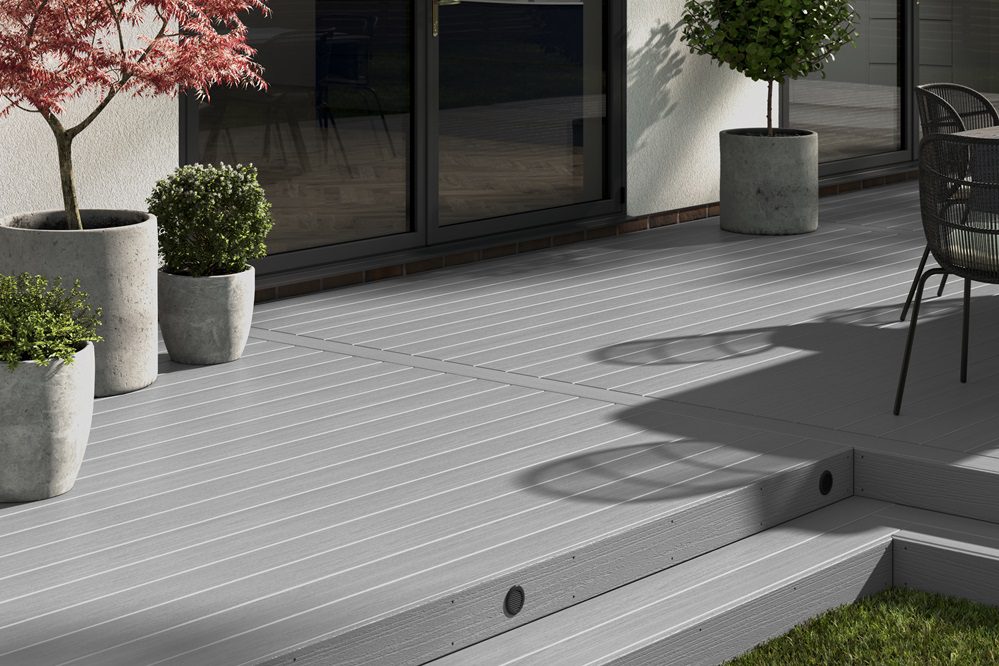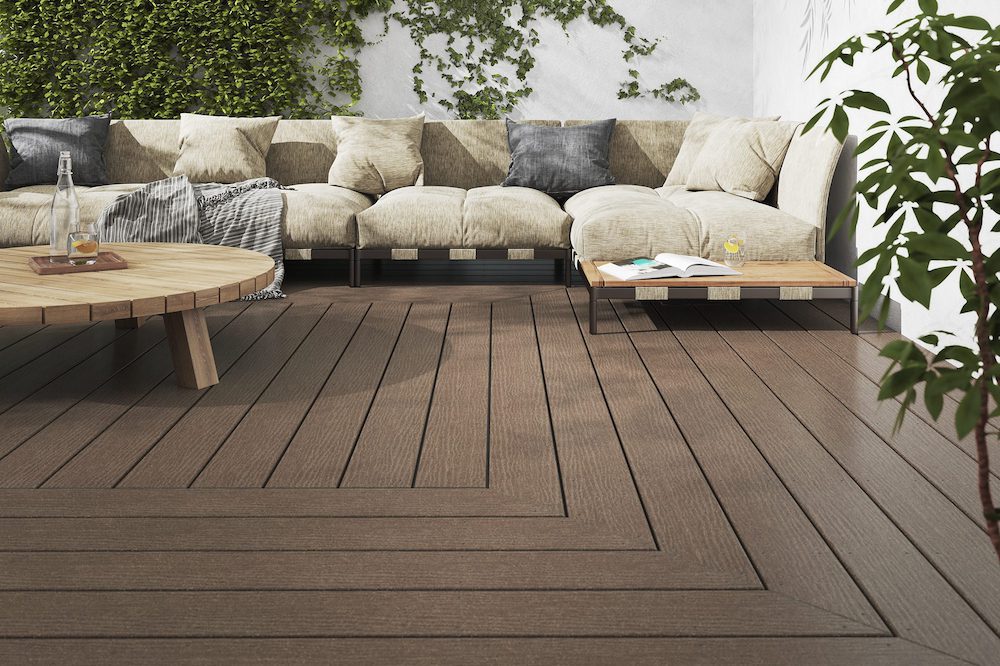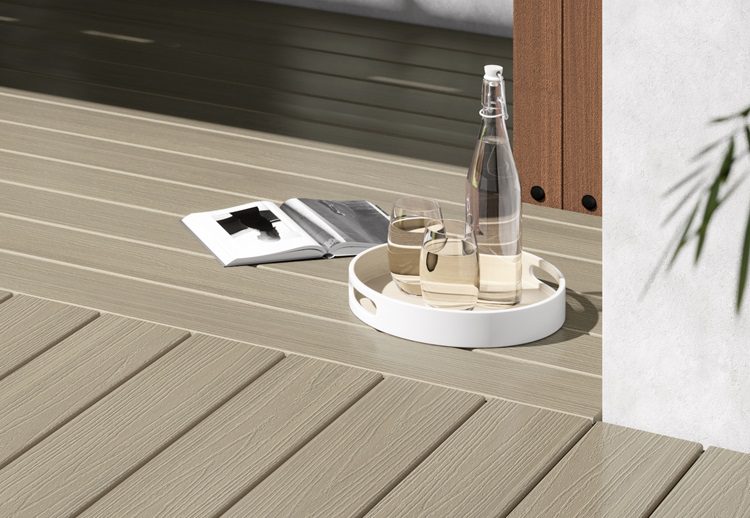When looking to buy composite decking, you may have come across “capped” and “uncapped” deck boards. In this post we’ll explain what this means, the difference between the two, and help you decide which is right for your decking project.
Capped and uncapped decking boards: What are they?
Capped composite deck boards have a protective outer layer that is co-extruded to the wood composite core during the manufacturing process and then fused to the board. This additional layer (sometimes called a ‘protective sleeve) helps to extend the lifespan of the boards and make them more durable. Capped deck boards are also more stain resistant and hold their colour for longer.
Uncapped deck boards have no protective outer layer, and some would argue, they look more natural and closer to the look of timber boards. As the wooden fibres are more exposed, they will weather overtime. However, unlike traditional timber, they will not rot, split or splinter, and are still an extremely durable, long-lasting option.
Why are decking boards capped and uncapped?
This is purely to do with design – some people prefer capped boards, and others uncapped. Uncapped boards are more cost-effective, whilst capped boards have an extra layer of protection from the elements. At Ecodek we offer both types of composite decking boards, giving you a greater choice.
Why should I choose capped composite boards?
Benefits of capped composite decking
The additional outer layer on capped decking (called EcoTech® technology at Ecodek), comes with an array of benefits:
Stain and fade resistant – Capped decking’s additional layer of protection makes it less prone to UV fading and is less likely to stain from spills.
Longer lasting and more durable – All composite decking is durable, however, capped decking’s additional protective layer makes it potentially longer-lasting than uncapped.
Wider range of colours – due to the better UV stability of capped decking, it usually comes in a wider range of colours – from light greys and browns, through to black.
Installing capped decking boards
Capped deck boards are usually installed using hidden clip fixings which offers a seamless finish. Our range of capped deck boards come with detailed installation instructions that are easy to follow.

Why should I choose uncapped composite decking?
Benefits of uncapped decking
Traditional uncapped decking has many advantages, especially when compared to timber decking:
Rustic finish – uncapped deck boards often have a more rustic, rough finish than their capped counterparts, which may better suit your home and garden.
Competitively priced – compared to capped deck boards, uncapped boards can be a more cost-effective choice. If you’re working to a tight budget, they may be the best option for you.
Low maintenance – as with capped deck boards, uncapped boards also benefit from being very low maintenance, requiring no treatments or paints, and only an occasional wash to keep them looking like new.
Installing uncapped decking boards
Our uncapped collections are face fixed with composite screws, like traditional timber decking. For the perfect finish our screw heads are colour matched to the colour of your boards.
As with our capped collections, our range of uncapped boards come with detailed installation instructions. If you’re unsure about your DIY skills, employing the services of a professional installer will ensure a stylish and safe finish.

Capped vs uncapped decking
Both capped and uncapped composite boards have their own advantages and will provide a beautiful, stylish, and long-lasting decked area compared to timber. The choice you make will most likely depend on your budget, your desired finish, and your own personal preference.
How can Ecodek help with your composite decking needs?
If you’re still unsure of the differences between capped and uncapped decking or have any queries about which would be the right option for you and your decking project, call our expert team today on 01978 667 840 or email enquiries@ecodek.co.uk for a no obligation chat.
